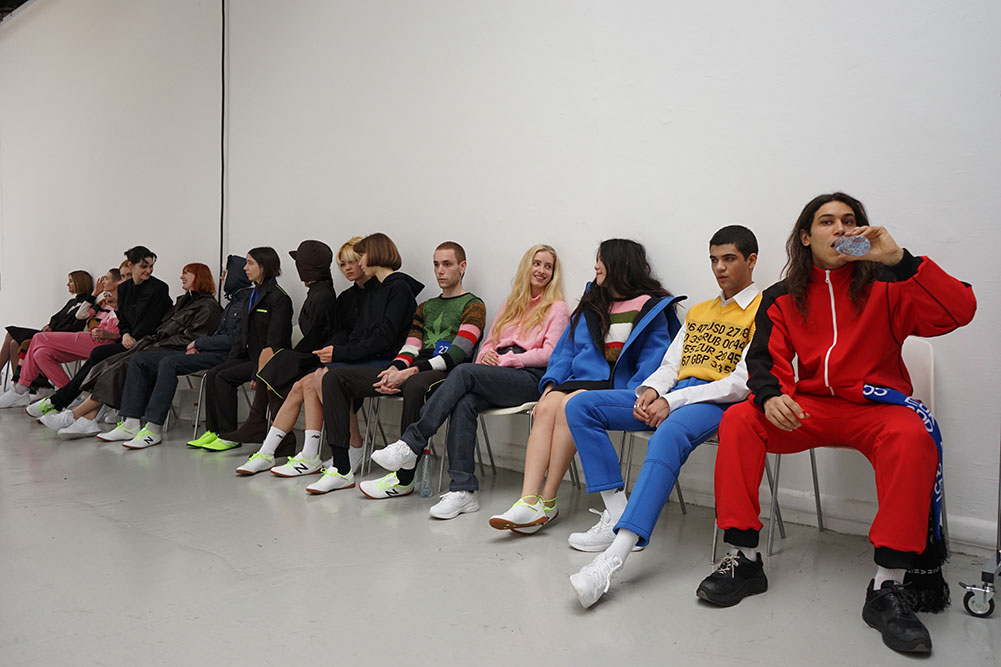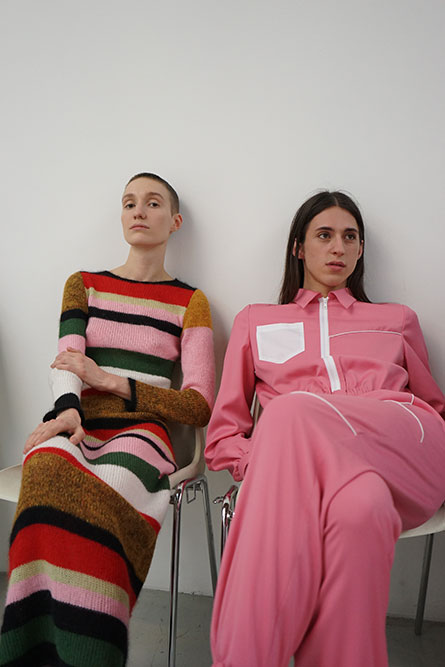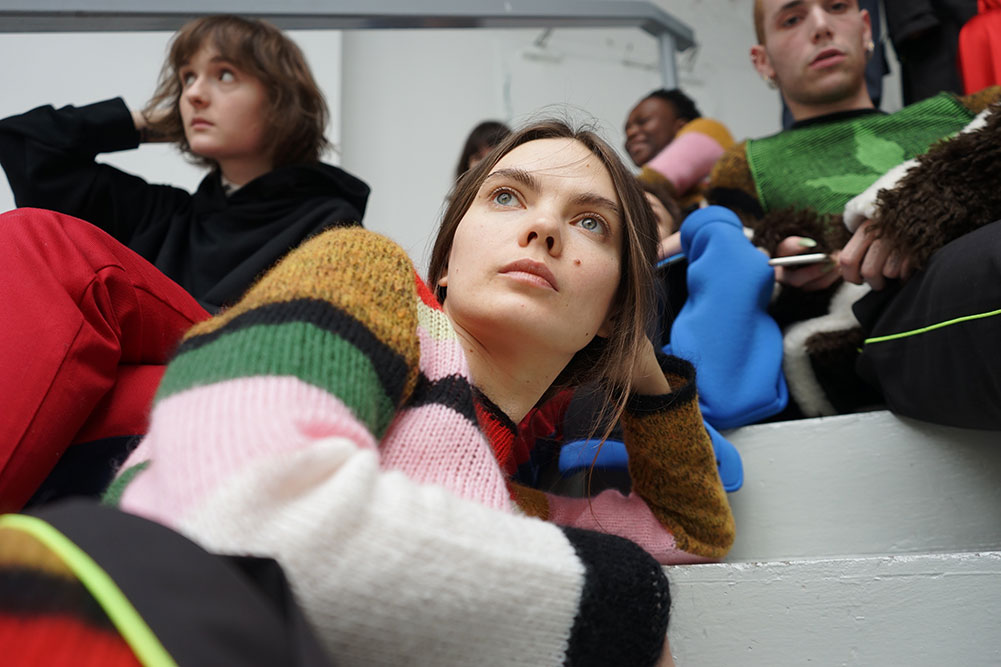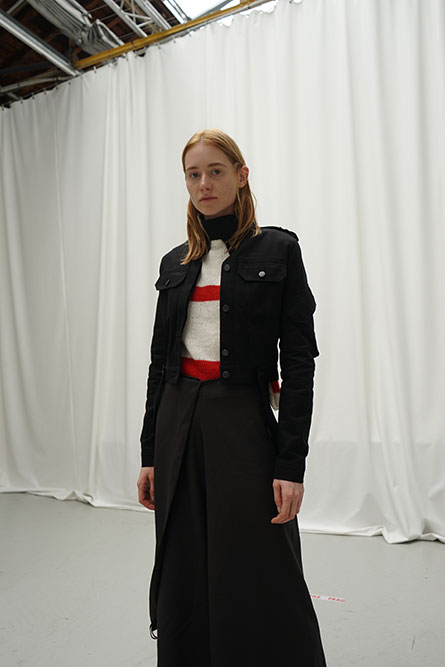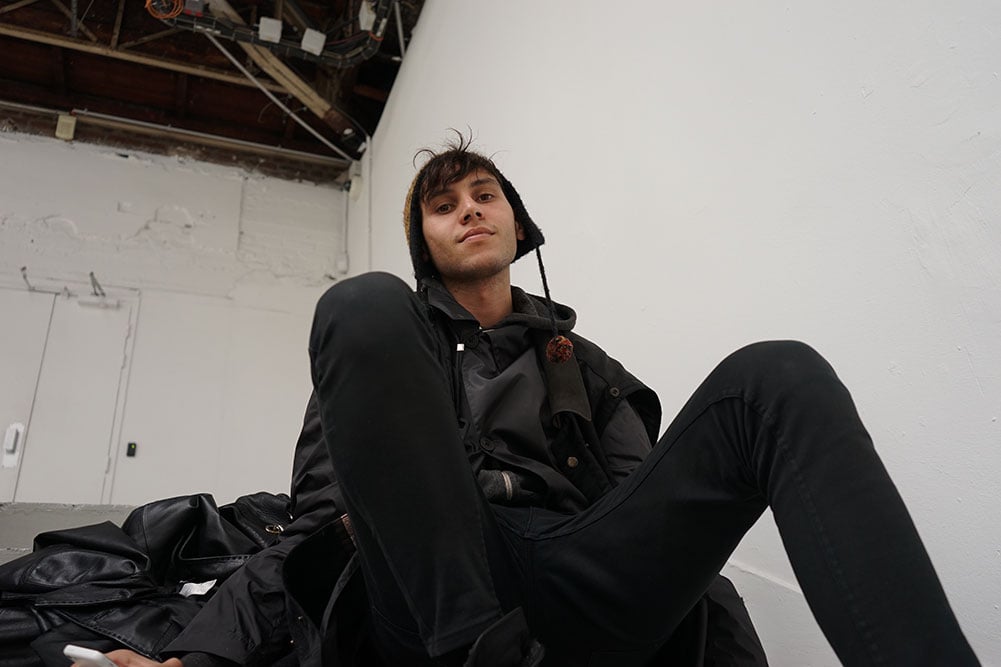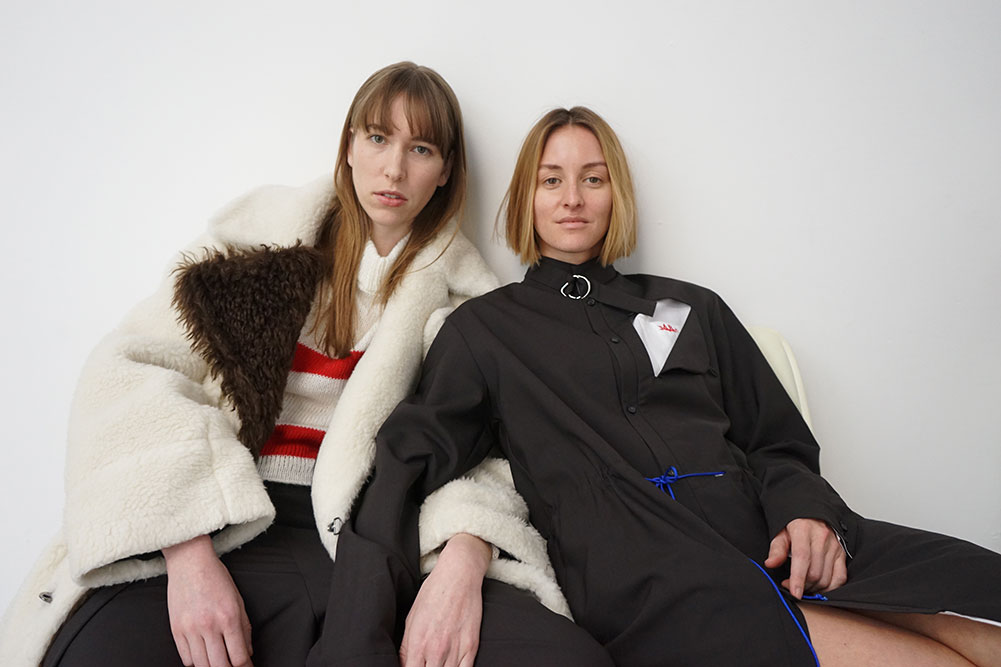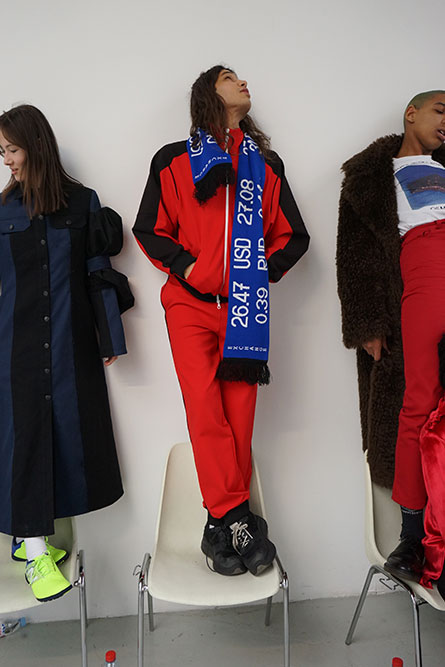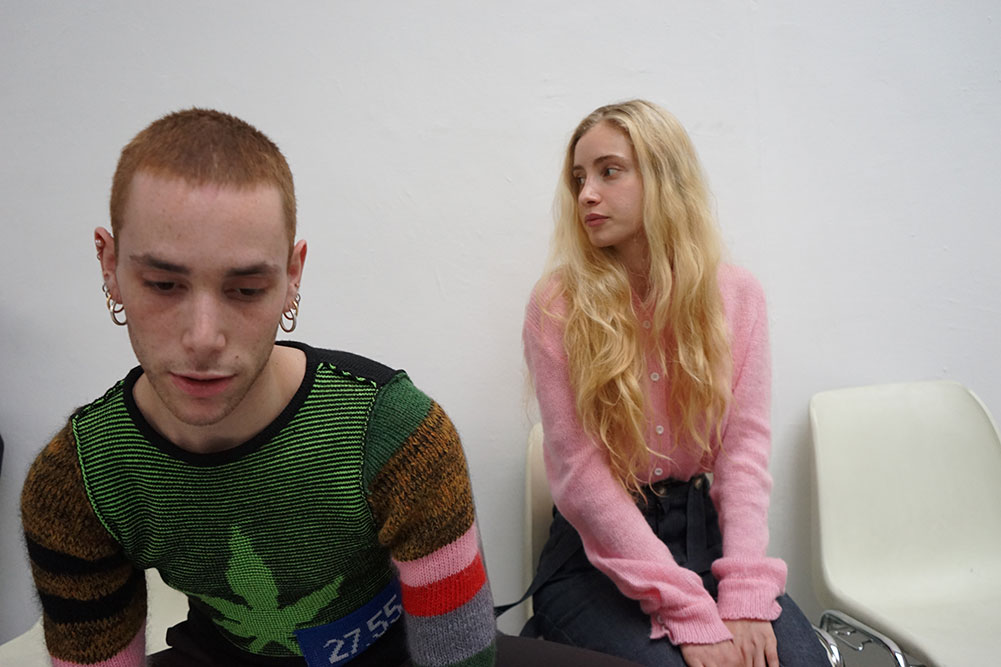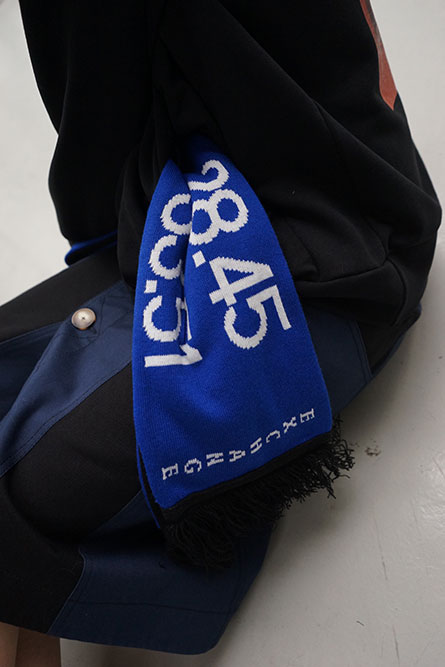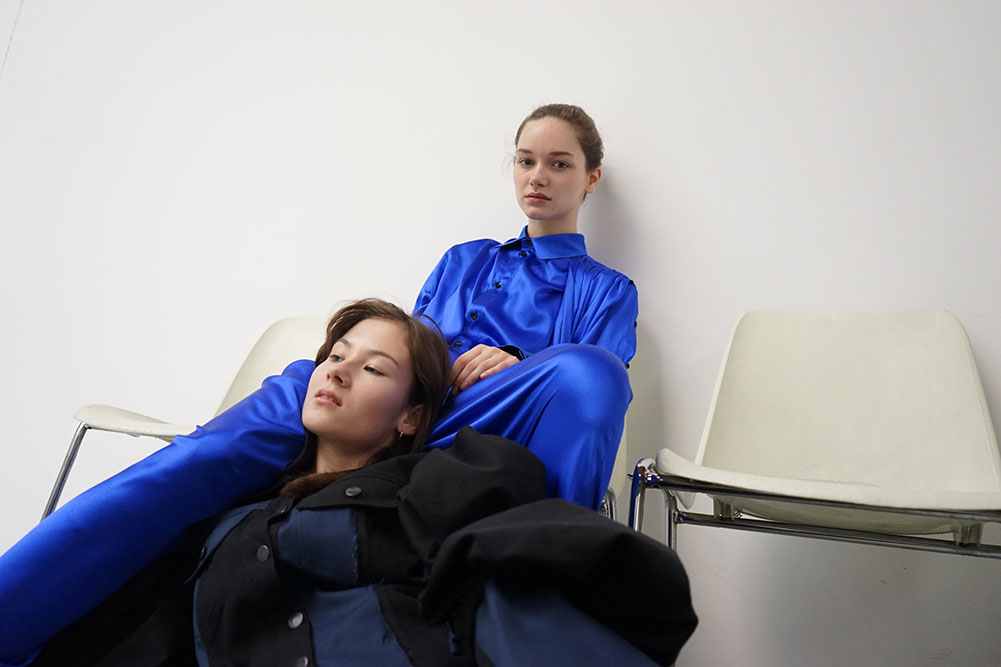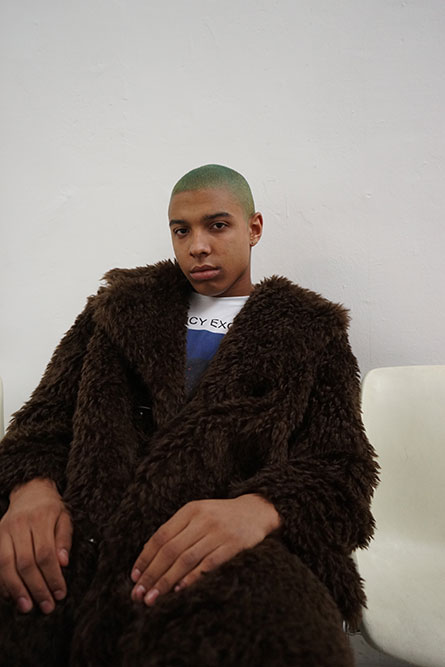Anton Belinskiy — New East 100
Anton Belinskiy has had a good run in fashion. Since launching his namesake womenswear brand he’s been nominated for the LVMH prize, shown in New York with VFiles and been endorsed by the likes of Vogue US, i-D and Dazed.
But it isn’t enough for him. Belinskiy is determined to lead the charge not just for himself, but for the whole new generation of Ukrainian creatives. In 2016 he came up with the idea of the One Day Project to showcase the country’s edgier fashion talents, and for the Fall-Winter 2017 season he brought Kiev’s fashion underground to Paris.
Belinskiy has always found his greatest inspiration in the day-to-day life of the Ukrainian capital and the creativity of his peers. Exchange, his latest collection, features rows of numbers which can be seen in currency exchange bureaus all over Kiev — a witty take on economic crisis and global inequality. Kiev and its eclectic material culture also will be Belinskiy’s inspiration for his upcoming installation at the Ukraine pavilion at this year’s Venice Biennale, a very rare foray for a fashion designer into the highest circles of the art world. As Vogue writer Liana Satenstein once wrote, Anton Belinskiy is going to take over the world — and he seems to be on track.
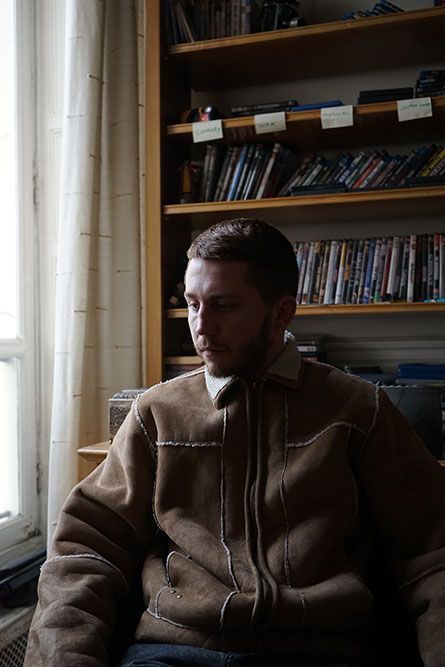
In your collections there are always a lot of references to day-to-day life in Kiev and very mundane bits of Ukrainian material culture, and a lot of your pieces are inspired by the way people dress on the street. Is this what you think about when you design?
I constantly think about the way people dress on the street, and the way clothes exists as part of life and culture. I think fashion as an isolated world is dying, and if we’re trying to produce something which can survive, we have to be closer to the consumers, the people who will wear it. My brand is never about just making clothes for the sake of it — of course we make showpieces but with every season we produce more and more wearable garments which wouldn’t just end up on a hanger.
What is the key to success for an emerging brand in your opinion?
The main thing is ideas, and the team which can bring them to life because you can’t do it on your own. You have to have a good team, and the better your team, the better the brand. The idea that a designer can do everything on his own is complete fiction. Also before you start you have to know that you have enough energy, emotion and enough funds. And you have to remember that in most cases success doesn’t happen in a minute. Even in my case it’s mostly involved tedious hard work and lots of people.
Do you have any ultimate aims in the industry?
One of my greatest aims is to make clothes which would be affordable for everyone who would like to be part of our world. Due to small production and good quality we can’t make it too cheap, but I’m thinking of creating an affordable line. I want everyone to be able to afford something, even with 150 dollars.
What are your main reasons for designing clothes?
That’s just what I do, I don’t really have a choice. I talk a lot about overproduction and death of fashion, but I don’t want to ditch clothes altogether, I’m just looking for the new better ways of doing it.
You’re going to participate in the Ukraine pavilion at the Venice Biennale this year, and it’s not often fashion designers are allowed into the art world. What did you think when you got this offer?
When the pavilion’s curators asked me to participate I was very surprised. I graduated from art school, and for me this approach was a bit strange. Today people talk a lot about the connections between art and fashion, but for me these two words are very separate. The installation we’re planning is going to be of course about the brand and clothes, and will continue the topic of exchange and trade which I started in FW2017 collection. One of my key inspirations for it is small forms of trade and kiosks selling souvenirs in the centre of Kiev.
Text: Anastasiia Fedorova
